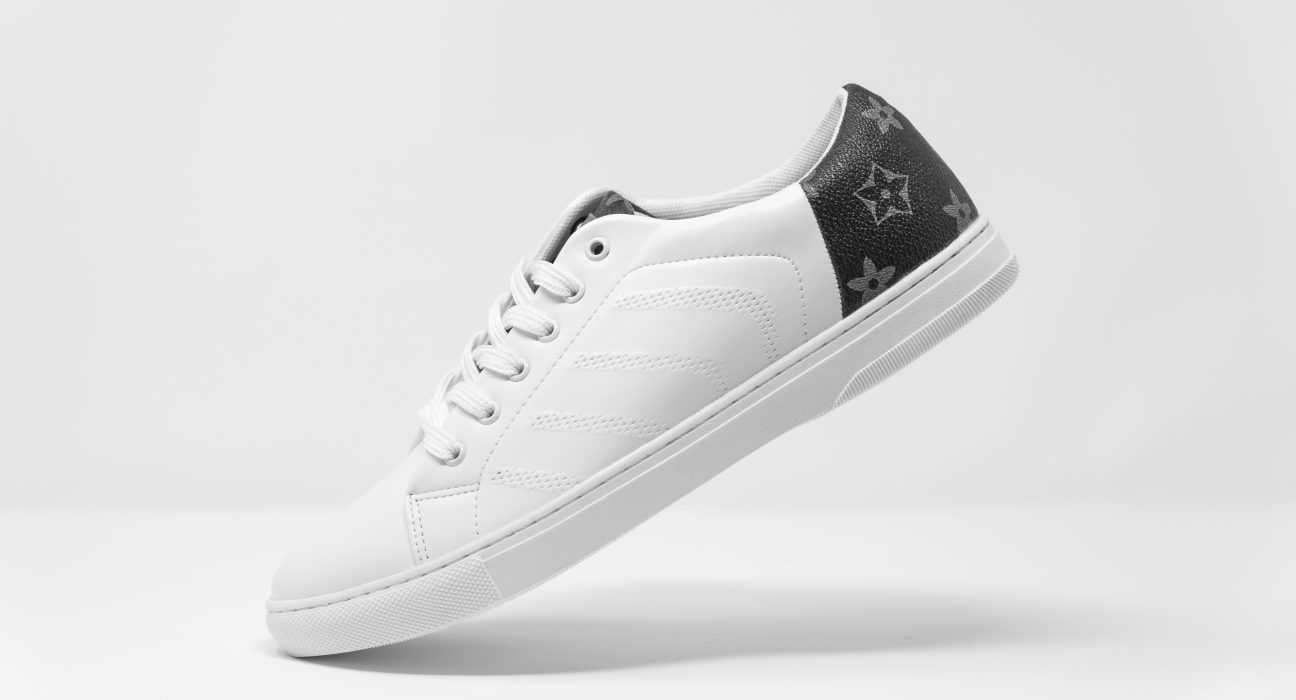From sandals to stilettos, women's footwear has come a long way over the centuries. With each passing era, new styles and trends have emerged that reflect the changing attitudes and values of society. From practicality to fashion statements, shoes have evolved into more than just protective gear for our feet. Join us on a journey through time as we explore the fascinating evolution of women's footwear – from ancient times to modern-day fashion runways!
Ancient Egyptian women wore sandals
When we think of ancient Egypt, images of towering pyramids and pharaohs adorned in gold come to mind. However, footwear played an important role in ancient Egyptian society too – particularly for women.
Ancient Egyptian women wore sandals made from woven reeds or leather strips that were tied around the ankle with a strap. These sandals were simple yet practical, providing protection from hot sand and rough terrain while also allowing air to circulate around the foot.
Interestingly, the design of these sandals varied depending on social status. Wealthy women would wear more elaborate sandals adorned with jewels and precious metals while commoners would stick to simpler designs.
Footwear was not just a functional item for Ancient Egyptians either; they believed that shoes had mystical properties and could protect against evil spirits. In fact, some hieroglyphics depict gods wearing elevated shoes as a symbol of their superiority over humans.
It's fascinating to see how even thousands of years ago, footwear played an important role in shaping cultural identity and societal norms – something that still rings true today!
Greek women wore high heeled shoes
When we think of high heels, we often associate them with modern fashion. However, did you know that Greek women were some of the first to wear high heeled shoes? That's right! In fact, ancient Greek paintings and sculptures depict women wearing elevated shoes as far back as 400 BCE.
These early versions of high heels were not just a fashion statement but also served practical purposes. The added height provided protection from dirty streets and gave a sense of authority and power to those who wore them.
Interestingly enough, it wasn't until the Hellenistic period that these shoes became more ornate with intricate designs and embellishments such as jewels and gold leaf. It was during this time when footwear became an important aspect of self-expression for both men and women in Greek society.
The history behind high-heeled shoes is fascinating; what started off as practical footwear has now become a staple in modern fashion. Who knows what other unexpected origins our favorite styles have?
The Romans wore high heels
When we think of stylish footwear, we often picture high heels. But did you know that the Romans were among the first to wear them? Yes, it's true! Roman women wore high-heeled shoes called “kothorni” as a symbol of social status and wealth.
Interestingly enough, both men and women in ancient Rome donned these fashionable shoes. The higher the heel, the more prestigious your position in society was considered to be. Men who wore high heels showed their status as well as their masculinity.
In fact, some Roman senators even passed laws regulating who could wear elevated footwear based on their rank or class level. This shows how important fashion was to people back then!
These early versions of high heels were not always comfortable; they were mainly made from wood and leather with very little cushioning for support. Nevertheless, they remained popular throughout history because of their ability to make anyone look taller and more elegant.
The evolution of women's footwear is fascinating when looking at its roots in ancient times like this!
Women's footwear became more practical during the Middle Ages
During the Middle Ages, women's footwear underwent a significant transformation. Practicality and functionality became more important than ever before. Instead of ornate and decorative shoes, women began wearing simple leather or cloth shoes that protected their feet from rough terrain.
The most common style of shoe during this time was the turnshoe, which had a soft sole made from layers of leather stitched together. The design allowed for flexibility and durability while providing enough protection to prevent injuries.
Another popular style was the pattens, which were wooden platforms worn over the shoes to keep them clean and dry in muddy streets. While they may not have been the most fashionable choice, they were certainly practical for everyday life.
As society evolved and women began participating in more physical activities such as hunting or riding horses, new styles emerged that provided better support and comfort. Boots with laces or buckles became popular choices for these kinds of activities.
Practicality reigned supreme during this period when it came to women's footwear. It wasn't until centuries later that fashion took center stage once again.
Wearing high heels became more popular in the 1800s
In the 1800s, wearing high heels became a popular trend among women. It was during this time that shoes began to be seen as a fashion accessory rather than just a practical necessity for protecting one's feet.
The first high heels were actually worn by men in the 1600s but eventually transitioned over to women's footwear. High heels quickly became associated with femininity and elegance, making them a must-have item for many fashionable women.
However, these early high heels were not particularly comfortable or practical. They often featured narrow toes and thin soles which made walking difficult and uncomfortable.
Despite their discomfort, high heels remained popular throughout the 19th century. Women continued to wear them as a symbol of status and social standing.
It wasn't until the early 1900s that designers began to prioritize comfort in their shoe designs. This led to new styles such as flats and low-heeled pumps becoming more popular among women who wanted both style and function from their footwear.
Nevertheless, even today many women still choose to wear high heels on special occasions or simply because they enjoy the way they look. The evolution of women's footwear continues with new trends emerging every year, offering endless possibilities for self-expression through fashion choices.
Women's shoes started to become more comfortable in the early 1900s
During the early 1900s, women's footwear started to become more comfortable. This shift in comfort was due to a combination of cultural and societal changes. Women were now participating in various activities such as sports, social events, and working outside their homes. The need for shoes that could provide them with support and comfort during these activities became crucial.
Shoe manufacturers responded by introducing new styles like the Mary Jane shoe which had a lower heel and strap across the top of the foot for added stability. The Oxford shoe also became popular because it provided women with a sturdy sole and laces to adjust fit.
The use of softer materials replaced rigid leather soles, making shoes lighter and more flexible. These advancements gave women the ability to move freely without sacrificing style or comfort.
As fashion continued to evolve throughout the century, designers began experimenting with new shapes and styles while still prioritizing comfort. By incorporating cushioned soles, arch support, breathable fabrics, and innovative designs; modern-day designers continue this trend towards creating stylish yet practical footwear that enhances our daily lives.
This period marked an important turning point in how we perceive women's footwear; no longer just as decorative objects but rather functional pieces that enhance mobility while maintaining aesthetic appeal.
Women's footwear continued to evolve in the late 1800s and early 2000s
During the late 1800s and early 1900s, women's footwear saw significant changes in design and function. High heels continued to be popular, but new materials such as rubber and leather allowed for more comfortable designs. The introduction of the ankle boot was a game-changer, providing women with a practical option that still looked fashionable.
As fashion trends changed, so did footwear styles. In the 1920s, flapper style shoes emerged with low heels and intricate details. During World War II, practicality became key as women needed shoes suitable for factory work. This led to the rise of flat-soled shoes like loafers and sneakers.
In the latter half of the 20th century, athletic shoes took center stage thanks to brands like Nike and Adidas. Women's running shoes were designed specifically for their needs with added support features.
Fast forward to the early 2000s where comfort became a top priority once again. Brands started incorporating cushioning technology into their designs while still keeping up with current fashion trends.
With each passing year comes new advancements in shoe technology and design. It’s exciting to see what innovations will come next!
Women's footwear has evolved significantly and there is still more evolution
As we can see, women's footwear has come a long way since the ancient times of sandals and high heels. From practicality to fashion statements, there have been numerous shifts in style and function over the years. However, one thing is for sure – the evolution of women's footwear is far from over.
In today's world, we are seeing even more innovation with new materials being used, sustainable options becoming more prevalent, and increasing inclusivity in size and design. The future of women's footwear holds endless possibilities as designers continue to challenge themselves to create something new.
One thing remains constant though: shoes will always be an important part of our lives. They provide us with comfort and support while also expressing our personal style. So here's to the next chapter in the history of women's footwear – may it be just as exciting as those that came before!


